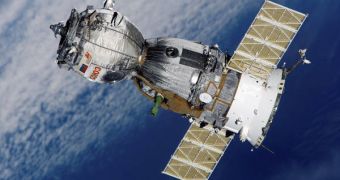The Russian Federation has fallen considerably behind the United States over the past decades in terms of space technology, but it would seem that it's now pushing for a spectacular comeback. Later today, the RosCosmos Russian space agency will unveil its plans for the future generation of manned spacecraft, which are to take astronauts to the Moon, and maybe even beyond. At the news conference, officials are also expected to announce what company will be the main developer of the project, seeing how numerous have enlisted to receive the government funds that have been alloted to this project.
Despite the fact that details about RosCosmos' demands from the producers are scarce to say the least, a list of requirements for the future spacecraft, dubbed PPTS, standing for Prospective Piloted Transport System, has been quietly released to the Russian space industry. The spaceship, to be completed and operational by no later than the end of the next decade, is to replace the veteran three-seat Soyuz capsule, which has been in operation for the better part of the last 40 years.
One of the main demands for the new manned ship is for it to be able to enter low Earth orbit and also to be able to reach the orbit of the Moon, if needed. For that to happen, RosCosmos envisions two types of ships constructed on the same platform. The first one, destined for our planet's orbit, would be able to carry 3 astronauts and 500 kilograms of cargo and would have a weight of just 12 tonnes. The other one, destined for the Moon, is to weigh no more than 16.5 tonnes. It should also carry four astronauts, along with 100 kilograms of supplies and other cargo.
In addition to their main two uses, of reaching the International Space Station and the Moon, versions of the future craft should also be able to perform other necessary tasks as well, the RosCosmos specifications point out. That is to say, they must be capable of traveling high-inclination orbits, such as those now occupied by spy satellites, and to also remain for more than a full year docked on the ISS. Thirty-day-long missions in orbit will also be a necessity, in cases where the PPTS will not need to dock on the orbital station.

 14 DAY TRIAL //
14 DAY TRIAL //